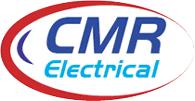 Add My Company
Add My Company
Sign In

Detecting an oil leak is not the same as detecting a water leak. Unlike water, oil does not conduct electricity so can’t be detected by passing a small current through it and looking for a return signal, as you can with water. There are three main types of systems on the market to detect an oil leak, these being, Optical as manufactured by CMR Electrical Ltd, detection cable and small bund in the floor with a float mounted inside. So, what are the advantages and disadvantages with each type of system.
Optical
Advantages
After a quick wipe of the sensing bulb, the sensor is ready to detect the next leak
Being manufactured from robust plastic, the sensor is less susceptible to damage
Reaction time to detecting a leak is quick, approximately 3 seconds from oil touching the sensing bulb.
Height adjustable, giving a spill depth between 1 to 25mm before an alarm is raised. This can be useful in areas where a small quantity of oil is acceptable such as pump drip trays.
Cost, as little as £72 per sensor.
Disadvantages
Needs to be positioned in a bunded area or area that an oil leak can be held to stop environmental damage.
With the acceptation of our OSPW, oil leak sensor designed for wet areas, optical sensors will detect any liquid.
How do optical sensor work?
The mode of operation is the principle of total internal reflection. An LED and photo-transistor are housed in a plastic (Polysulfone) dome. When no liquid is present, light from the LED is internally reflected from the dome to the photo-transistor. When a liquid covers the dome, the effective refractive index at the dome-oil boundary changes allowing some light from the LED to escape. Thus the amount of light received by the photo-transistor is reduced indicating the presents of oil.
Detection cable system
Advantages
Can be formed to create a bund around the equipment being protected.
Can be used to follow un-bunded oil pipes.
Disadvantages
Cost, this type of cable is very expensive
One time usable, if the cable detects a leak or comes into contact with spilt oil, it becomes inoperable and must be changed before the system can detect a second leak.
Expensive maintenance, each time oil comes into contact with the cable, it needs to be changed.
Slow operating time. It can take from an hour to several hours to raise an alarm from when the oil first touches the cable.
Damage, being cable it is susceptible to impact damage from foot traffic.
How does the detection cable work?
Within the structure of the cable are two sensor wires, separated by a thin rubber membrane that dissolves when in contact with oil. When the internal membrane dissolves, both sensor wires are able to touch allowing an electrical signal to flow from one sensor wire to the other thereby setting up an alarm.
Hole in the floor and float
Image result for float switch
Advantages
Cost Excluding the cost of digging a hole in the floor and sealing it, floats can be purchased for as little as £10.00
Disadvantages
Susceptible to dirt and dust clogging up moving parts making it inoperative when needed
Depending upon what impact protection has been provided, the moving parts on floats can be easily damaged
Will also detect water or any liquid
How does the float work?
Exactly the same has your water tank at home, when the level of oil in hole within the floor reaches a certain level, the floats internal micro switch closes.
For more information Get in touch with us here at CMR Electrical, so we can advise you on the best oil leak detection system for your application.
For more information on ADVANTAGES AND DISADVANTAGES OF DIFFERENT TYPES OF OIL LEAK DETECTION SENSORS talk to CMR Electrical
Enquire Now
List your company on FindTheNeedle.
